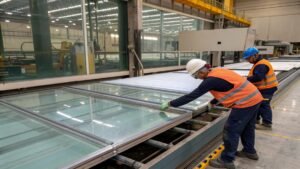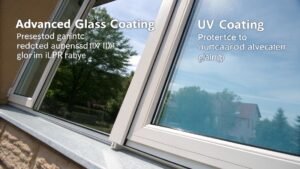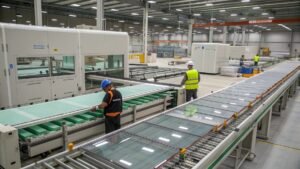Are you struggling with low light transmission and high reflection losses in your glass products? Anti-reflection (AR) coating technology offers a powerful solution to maximize optical performance.
An anti-reflection coating is a specialized thin film applied through wet coating processes that creates a microporous structure on glass surfaces. This advanced coating can increase light transmission by over 2.5% while significantly reducing reflection.
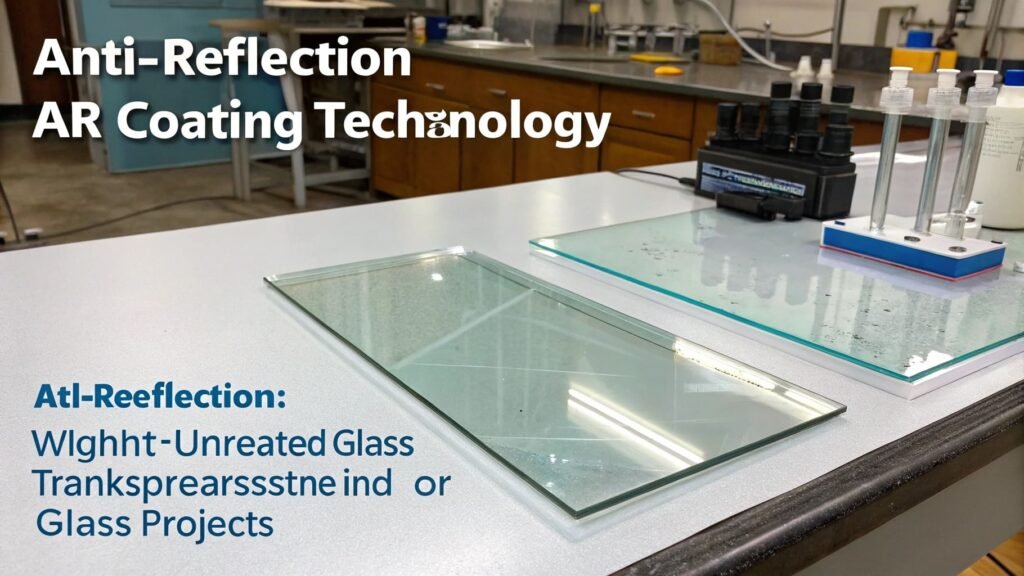
As a leading manufacturer of glass coating equipment, I’ve seen firsthand how this technology transforms ordinary glass into high-performance materials. Let me share what makes AR coatings so valuable.
What does an anti-reflective coating do?
Wondering exactly how AR coating enhances glass performance? Looking for concrete benefits and ROI metrics? Let’s examine the real impact of this technology.
Anti-reflective coating works by optimizing light transmission through glass surfaces. For solar applications, it boosts transmission to 94.6% and improves panel efficiency by 1.2% – potentially generating millions in additional revenue for large installations.

Through years of developing AR coating solutions, I’ve observed several key performance aspects:
Application Process
The coating’s success depends on precise application:
- Surface preparation through thorough cleaning
- Environmental control (15-28°C, 40-50% humidity)
- Uniform coating thickness (15-25g/m² wet)
- Professional-grade equipment
- Automated process control
Technical Parameters
Our coating lines deliver precise specifications:
- Working width: 1500mm standard
- Glass thickness: 1.6-6mm
- Processing speed: 0-20m/min
- Production capacity: 300pcs/hour (2000x1000mm)
- Operating rate: 2.4-2.6%
Performance Benefits
AR coatings provide measurable advantages:
- Increased light transmission >2.5%
- Enhanced solar panel efficiency
- Reduced glare and reflection
- Improved optical clarity
- Better energy conversion
What are the disadvantages of anti-reflective coating?
Concerned about potential drawbacks? Want to understand the real challenges before investing? Here’s an honest assessment of AR coating limitations.
While highly effective, AR coatings require precise application conditions, regular maintenance, and proper handling. Success depends on using professional equipment, maintaining strict environmental controls, and following proper maintenance protocols.
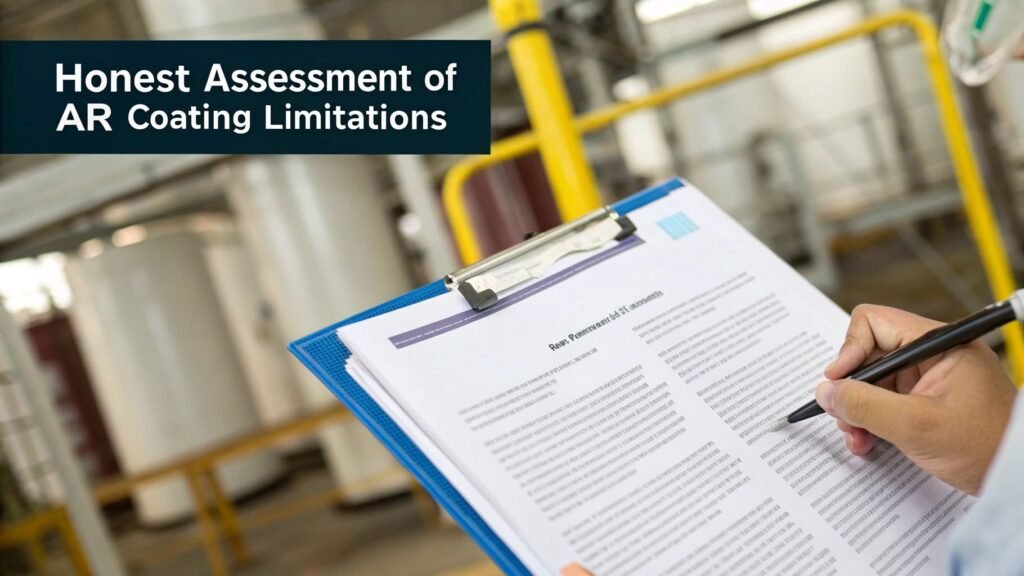
Based on extensive manufacturing experience, here are the key considerations:
Technical Requirements
- Strict environmental conditions
- Precise temperature control
- Humidity management
- Clean room conditions
- Professional equipment
Maintenance Needs
- Periodic cleaning
- Performance monitoring
- Coating inspection
- Potential repairs
- Environmental protection
Cost Factors
Investment considerations include3:
- Equipment costs
- Installation requirements
- Operating expenses
- Maintenance budget
- Staff training
How long does anti-reflective coating last?
Concerned about coating durability? Want to understand the real-world lifespan of AR treatments? Let’s examine the factors affecting coating longevity.
When properly applied using industrial coating equipment, AR coatings typically last 5-10 years under normal conditions. Longevity depends on application quality, environmental exposure, and maintenance practices.
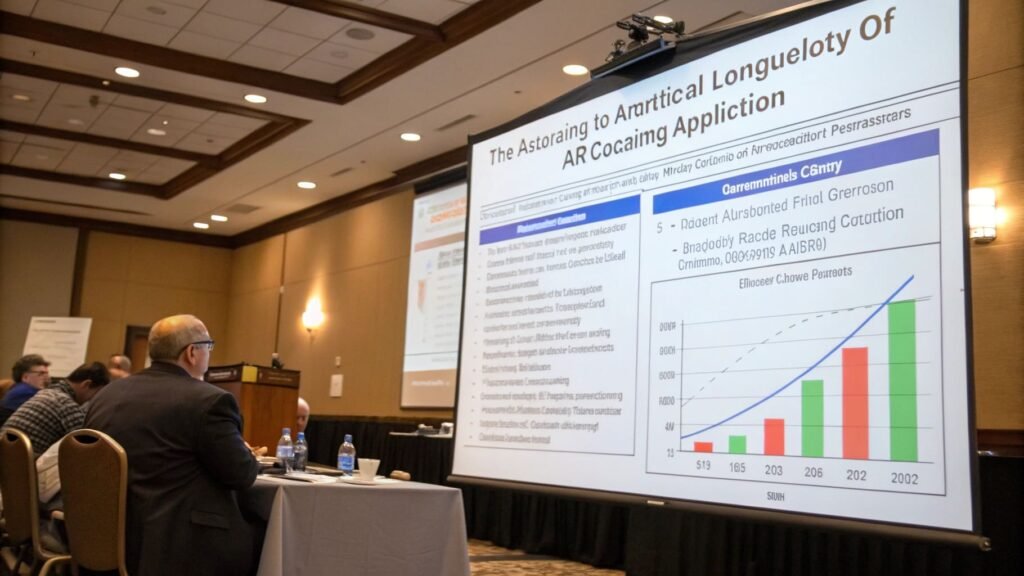
Our coating equipment incorporates several features to maximize durability:
Process Controls
Equipment design ensures quality:
- Automated material handling4
- Precise temperature control
- Humidity management
- Uniform application
- Quality monitoring5
Environmental Protection
Systems maintain optimal conditions:
- Temperature regulation
- Humidity control6
- Dust prevention
- Contamination protection
- Process validation
Quality Assurance
We maintain high standards through:
- In-line monitoring
- Regular testing
- Process documentation
- Performance verification
- Continuous improvement
Conclusion
Anti-reflection coating technology significantly improves glass performance when properly applied using professional equipment. While there are challenges to consider, the benefits of increased transmission and improved efficiency make it a valuable investment for many applications.
-
Understanding best practices in process control can enhance efficiency and product quality in manufacturing processes. ↩
-
Exploring the importance of regular maintenance can help prevent costly downtimes and extend equipment lifespan. ↩
-
Learning about investment considerations can guide better financial decisions and optimize manufacturing operations. ↩
-
Explore how automated material handling enhances efficiency and quality in coating processes. ↩
-
Discover various quality monitoring techniques that help maintain high standards in coating applications. ↩
-
Learn about the critical role of humidity control in ensuring product quality and preventing defects. ↩



